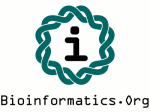
ANALYSIS AND SIMULATION OF METABOLIC PATHWAYS USING COLOURED PETRI NETS
INTRODUCTION
E-mail: burri@bioinformatics.org
ABSTRACT
Molecular Biology and Biotechnology have begun to focus sharply on the problem of gene regulation. This problem is inescapable, because no open reading frame (ORF) will be expressed without the appropriate regulatory sequences. Moreover, some genes code for proteins whose function is to turn other genes on and off. Groups of these genes form networks with complex behaviors. These networks control other genes whose protein products catalyze specific biochemical reactions, and the small molecules which are substrates or products of these reactions can in turn activate or deactivate proteins which control transcription or translation. For that reason, gene regulation can be said to indirectly control biochemical reactions in cellular metabolism, and cellular metabolism itself exerts control on gene expression.
For these reasons, the interdependent biochemical processes of metabolism and gene expression can and should be interpreted and analyzed in terms of complex dynamical networks. Hence modeling and simulation are necessary. Our knowledge on components of the biological systems has significantly enlarged. Breakthroughs in the bioinformatics are providing new opportunity to understand complex biological systems at the system-level. The so-called systems biology is becoming a powerful approach to studying the biology systems as system. It involves identifying how genes function and how their products interact with other molecules, within the context of processes and their assumed roles. In order to gain a precise understanding of these systems, it is important to study the interactions and interrelationships among metabolic system variables in order to gain a precise understanding of such systems. we want exploite Coloured Petri net methodology to systematically study metabolic networks.
- Computer Science and Biology:some relationship. Everybody have the impression that, in a lot of sense, science have changed, and still now change, the everyday life. Technologies, in particular, are now needful in our work and in our life. Furthermore, the use of computers, or, more in general, modellization, helps many science, either in technological aspects (personal computer, nets, WWW.. . ) and at an abstract level. Physics, chemistry, mathematics, engineering, computer science, are only some of the sciences that are heavily related with biochemical. In particular, biology, From a general point of view, we can divide efforts to this field in two categories:
- Automatic Treatment of Genomic Information All the algorithms to store and analyze DNA/RNA sequences and protein structure; this field include algorithms and tricks to sequencing genomes.
- Modellization of Biological Pathway Pathways are modelled and then analyzed and simulated with automatic tools, with the aim of create a user-friendly interface for biologists to store experiments, and to predict behavior of pathways.
MOTIVATION
In M.Peleg et al. (Bioinformatics, 2002). was developed a qualitative model of biological peocesses; it does not represent cellular concentration of reactants, or kinetic coefficients that are required to formalize quantitative models. It might be possible to extend his model to represent such information by using COLOURED PETRI NETS, where the attributes of reactants. Alternatively, we can use the Hybrid Petri Nets approach, using in Matsuno and Doi (2000).
...................NOT AT COMPLETED REMAIN VERY SOON...........................
HOME
MEMBERS


Read my Guest Book!
Sign my Dreambook!
Raghundha Reddy Burri
*
|ABCDEFG|
|HIKLMNP|
|QRSTVWX|
| |
| |
__|Y Z|__
Started at 18th September
© Burri 2003